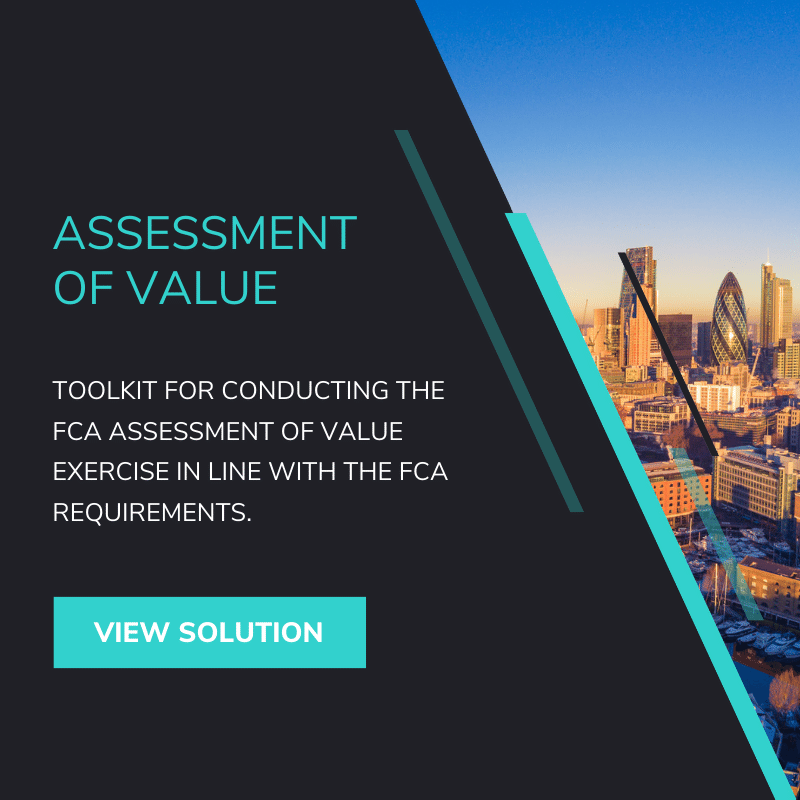ESMA recently published a supervisory briefing on the supervision by National Competent Authorities (NCAs) of costs applicable to Undertakings for the Collective Investment in Transferable Securities (UCITS) and Alternative Investment Funds (AIFs). The briefing was response to the need to improve convergence across NCAs in the approach to undue costs.
To promote convergence in relation to the supervision of costs in UCITS and AIFs, ESMA has developed criteria to support NCAs in:
- Assessing the notion of “undue costs”; and
- Supervising the obligation to prevent undue costs being charged to investors
The supervisory briefing, although addressed to NCAs, is also aimed at providing market participants with indications of NCAs’ expectations and compliant practices regarding the cost-related provisions of the UCITS and AIFMD frameworks.
See our earlier blog for more details on the ESMA briefing.
In 2019, ESMA published a report on costs and past performance in retail investment products and found that UCITS fund charges reduce returns by 25% and retail investors in UCITS pay twice as much as institutional investors. In the 2020 report, not much had changed.
Whilst the UK FCA is leading the way with FCA Assessment of Value, it is clear that regulators at both EU and UK level are seeking to clamp down on poor value asset management offerings.
Both the revised Market in Financial Instruments Directive (MiFID II) and the Packaged Retail and Insurance-based Investment Products (PRIIPs) Regulation have introduced new requirements on product governance and investor disclosures. The Benchmarks Regulation has also resulted in guidance from ESMA on benchmark disclosure and past performance in KIIDs, including on disclosing an active or passive management strategy, and disclosure of performance against targets (even where the comparator is not a benchmark).
FCA Assessment of Value
In the UK, the FCA sets out seven factors that firms must consider when assessing the value of each fund:
- Quality of service: the range and quality of services provided to investors;
- Fund performance: the performance of the fund, after deduction of all payments out of scheme property as set out in the prospectus. Performance should be considered over an appropriate timescale having regard to the scheme’s investment objectives, policy and strategy.
- AFM costs: in relation to each charge, the cost of providing the service to which the charge relates, and when money is paid directly to associates or external parties, the cost is the amount paid to that person.
- Economies of scale: whether the AFM is able to achieve savings and benefits from economies of scale, relating to the direct and indirect costs of managing the scheme property and taking into account the value of the scheme property and whether it has grown or contracted in size as a result of the sale and redemption of units.
- Comparable market rates: in relation to each service, the market rate for any comparable service provided by the AFM, or to the AFM or on its behalf, including by a person to which any aspect of the scheme’s management has been delegated.
- Comparable services: in relation to each separate charge, the AFM’s charges and those of its associates for comparable services provided to clients, including for institutional mandates of a comparable size and having similar investment objectives and policies;
- Classes of units: whether it is appropriate for unitholders to hold units in classes subject to higher charges than those applying to other classes of the same scheme with substantially similar rights.
ESMA Pricing Process
In comparison to the FCA Assessment of Value requirements, ESMA expects regulatory authorities to require management companies develop and periodically review a structured pricing process addressing the following elements:
- Whether the costs are linked to a service provided in the investor’s best interest. It should therefore be assessed whether the costs are necessary for the fund to operate in line with its investment objective (e.g.: the fund’s investment strategy, portfolio management, transaction and settlement costs), or strictly functional to the ordinary activity of the fund or to fulfil regulatory requirements (e.g. cost of annual audit, taxes, NCA’s fees);
- Whether the costs are proportionate compared to market standards and to the type of service provided (e.g.: by mean of a table displaying costs of funds with similar investment strategies and characteristics in order to detect outliers) particularly in the context of potential conflict of interests in the context of payments to third parties (e.g.: legal or other type of professional consultancies), intragroup delegation (e.g. portfolio management, service provisions) or depositary functions;
- Whether the fee structure is consistent with the characteristics of the fund (e.g.: higher costs would normally be charged to funds with more complex investment strategies/type of assets; there should be a balance between the complexity of the activities performed and the costs borne by investors);
- Whether the costs borne by the fund, including those paid to third parties (e.g.: depositary), are sustainable taking also into account the expected net return of the fund, based also on its risk profile and investment strategy;
- Whether the costs ensure investors’ equal treatment and are not of material prejudice to the interests of any class of unitholders or potential unitholders, except for AIFs not distributed to retail investors disclosing a preferential treatment in their rules or instruments of incorporation where such a preferential treatment is allowed under the applicable legislation;
- Whether there is no duplication of costs (e.g.: the same type of fee is not included in two different cost categories) and costs are properly separated and accounted for. To this purpose, a clear distinction between the costs charged to the fund and those paid directly to the management company and/or the depositary and/or any other third party should be made;
- Whether a cap on fees (e.g.: subscription/redemption fees), if any, is applied and clearly disclosed to investors (e.g.: expressed as a percentage of the NAV);
- In case of UCITS and relevant AIFs, if the fund charges performance fees, whether the performance fee model and its disclosure is compliant with the ESMA Guidelines on performance fees
- Whether all costs are clearly disclosed to investors in line with applicable EU rules (AIFMD, PRIIPs and UCITS), as well as any additional rule applied at national level;
- Whether the pricing process and all charged costs are based on reliable and documented data, in order to ensure the ability of the NCA to reproduce ex post the calculations made by the management company on a single portfolio level
Value Focus
The briefing is the latest in a long line of developments over the last few years to improve the value for investors. We should not be surprised to see the emergence in due course of a European Directive in respect of Assessment of Value, particularly as a logical extension of current work on Closet Trackers.
In 2016, ESMA conducted research on a sample of 2,600 funds for the period 2012-2014 to determine whether it could find any indication of closet indexing at an EU-wide level. This research resulted in an update to the UCITS Q&A in relation to benchmark disclosures.
In 2019, the Central Bank of Ireland published the results of its Thematic Review of Closet Indexing which amongst many other findings, concluded that investor were not always given sufficient or accurate information about the UCITS to allow for informed decision making. The Central Bank also found cases where multi-manager UCITS consistently delivered a performance similar to an index.
Similarly, other countries across the EU conducted various reviews and in the most part found inadequate investor disclosures, weak controls by management company boards and examples of overcharging and compensation – see our blog on Closet Trackers for further information.
More recently, in April this year, ESMA published is Final Report on guidelines on performance fees in UCITS and certain types of AIFs in an attempt to harmonise performance fee structures as well as the circumstances in which performance fees can be paid.
Summary
It may be slightly premature to suggest that in the immediate future we will be seeing Assessment of Value reports in French, German and the many other languages of Europe, but it is clear that we are seeing a convergence with the UK Assessment of Value requirements at a European level.
Our FCA Assessment of Value Solution, powered by whole-of-market data from FE fundinfo, provides firms with a comprehensive and efficient toolkit for conducting the FCA Assessment of Value exercise in line with the FCA requirements in a cost-efficient and streamlined way.
Included is benchmark data from over 2000 investment funds, allowing users to flexibly analyse based on a number of factors including: fund size, complexity, fund type, geography, distribution channel, performance fees, asset class, minimum subscription sizes, active / passive.
Request a Demo
Error: Contact form not found.













